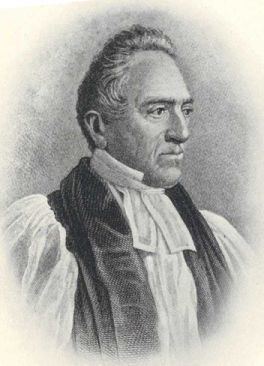Name Levi Ives | Education Hamilton College | |
 | ||
Died October 13, 1867, New York City, New York, United States Books The trials of a mind in its progress to Catholicism | ||
Levi Silliman Ives (September 16, 1797 – October 13, 1867) was an American theologian and bishop.
Contents

Early life
Levi was born at Meriden, Connecticut and was brought up on his father's farm in Turin, New York. Levi served during the first year of the War of 1812 and studied at Hamilton College, but in 1819 left the Presbyterian for the Episcopal Church, and studied in New York under Bishop John Henry Hobart, whose daughter, Rebecca, he married in 1822. That year he was ordained a deacon by Bishop Hobart. In 1823 he was ordained a priest in Philadelphia by Bishop William White.
Episcopal Church career
Ives was rector of Trinity Church, Southwark, Philadelphia, Pennsylvania, from 1823 to 1827; later he served as assistant minister at Trinity Church, New York, and as rector at St. James Church, Lancaster, Pennsylvania, until 1831.
After the unexpected death of the Right Reverend John Stark Ravenscroft in 1830, Ives was elected bishop of North Carolina on May 21, 1831. He was the 25th bishop of the ECUSA, and was consecrated by bishops William White, Henry Ustick Onderdonk, and Benjamin Treadwell Onderdonk. As a bishop Ives took great interest in the education and religious training of the black community.
Having become deeply attracted to the Oxford Movement while studying Church history, Ives founded a religious community called the Brotherhood of the Holy Cross at Valle Crucis, North Carolina. Its members (a few clergymen and zealous laymen) observed a community rule and preached Tractarian ideas. Observers grew worried, however, that Ives had started to move away from the teachings of the Protestant Episcopal Church and was embracing Catholic practices such as private confession to a priest and intercession prayers through the Virgin Mary and the saints. In 1848 he was arraigned before the Episcopal Church for such practices, but was pardoned after dissolving the Brotherhood and providing a written pledge that he would prohibit any liturgical practice not authorized by the Episcopal Church in the Book of Common Prayer.
Conversion to Roman Catholicism
Despite these concessions, Ives's theological convictions continued to evolve until he was no longer able to accept that his denomination was a branch of the true Catholic church. In 1852, after obtaining a six-month leave of absence, the 55-year-old cleric left for Europe with his wife. They went to Rome, where, on December 22, 1852, he sent a letter to the Convention of the Protestant Episcopal Church in North Carolina resigning his office of Bishop of North Carolina in view of his decision to join the Catholic Church. Ives was the first Protestant bishop since John Clement Gordon, Anglican Bishop of Galloway, to convert to Catholicism. Signalling his prominence, it was Pope Pius IX who received him into the Church on December 26, 1852. Some months later, his wife, too, converted to Catholicism.
In the spring of 1854 Ives published his apologia, The Trials of a Mind in its Progress to Catholicism. The book was met with at least one extensive, critical review by an anonymous ex-clergyman.
After two years in Rome, the Iveses returned to New York. As a lay Roman Catholic, whose marriage barred him from the priesthood, Ives spent his last years as a professor of rhetoric at St. John's College (now Fordham University). He also lectured at St. Joseph's Seminary and the convents of the Sacred Heart and Sisters of Charity, as well as concerning himself in charity work. He was also one of the founders of Manhattan College (a Catholic College now located in Riverdale, New York) and served as the first Chairman of its Board of Trustees (1863-1867).
